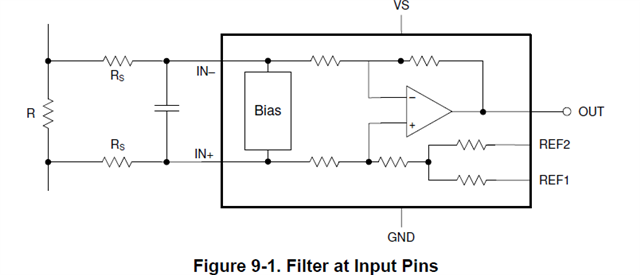Other Parts Discussed in Thread: INA240
Hello Team,
I am using INA240A-Q1 IC in my project.
Based on the IC datasheet specification, IC common mode voltage is -4V to 80V.
I am planing to use reverse protection diodes before the Rs resistor, So it will protect the IC during reverse voltage conditions 0f -12V or -24V (operating voltage is 12V or 24V).

Is it ok to use schottkey diodes before /after the Rs resistors?
If i use Schottkey diode then is it impact gain the accuracy of the IC?
Regards,
Giridhar.



